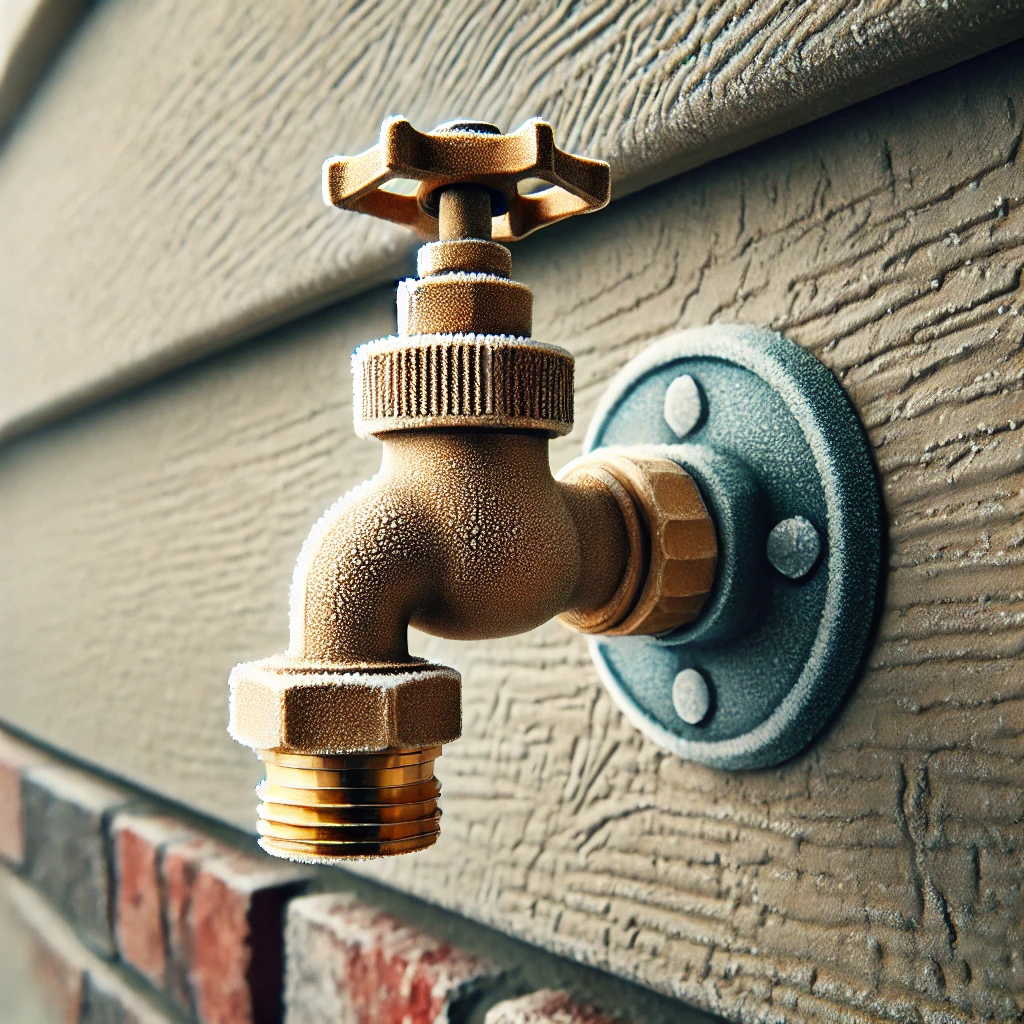As spring arrives, homeowners often breathe a sigh of relief, assuming they are free from the risks of frozen plumbing. However, sudden cold snaps, like the one approaching this weekend, can catch many off guard. One of the most vulnerable plumbing fixtures during these unpredictable temperature drops is the outdoor hose bib. Without proper precautions, a frozen hose bib can lead to burst pipes, water damage, and costly repairs.
Why Do Outdoor Hose Bibs Freeze?
Hose bibs, also known as outdoor spigots or faucets, are exposed to the elements, making them susceptible to freezing. When temperatures dip below 32°F, any residual water left in the hose bib or the connected water line can freeze. As the water expands, it creates pressure in the pipe, which can eventually cause it to crack or burst.
Even frost-free hose bibs are not immune. If a hose is left attached or the faucet was not properly winterized, water can remain trapped in the line, making it prone to freezing.
Signs of a Frozen Hose Bib
If you suspect your hose bib has frozen, look for the following signs:
- No water flow: When you turn on the outdoor faucet, only a trickle or no water comes out.
- Frost or ice buildup: Visible ice or frost on the hose bib itself is a clear indicator of freezing.
- Bulging or cracked pipe: If the pipe leading to the hose bib appears swollen or cracked, it may have already burst.
- Leaking inside the home: Water stains or dampness on interior walls near the hose bib connection point could indicate a ruptured pipe.
How to Prevent Your Hose Bib from Freezing
With temperatures expected to drop this weekend, it’s crucial to take preventive measures to protect your outdoor plumbing:
- Disconnect Hoses: Always remove garden hoses from outdoor spigots. A hose left attached can trap water, increasing the risk of freezing.
- Shut Off the Water Supply: If your home has a dedicated shut-off valve for outdoor faucets, turn it off. This prevents water from sitting in the line.
- Drain the Hose Bib: Open the spigot after shutting off the water supply to allow any remaining water to drain out.
- Use an Insulated Cover: Place a hose bib cover or an old towel wrapped in plastic around the fixture to add insulation.
- Let Indoor Faucets Drip: If the hose bib connects to an indoor water line, letting a nearby faucet drip can relieve pressure and prevent freezing.
What to Do If Your Hose Bib Freezes
If you discover a frozen hose bib, act quickly:
- Do not force the faucet: Trying to open a frozen hose bib can crack the fixture.
- Apply gentle heat: Use a hair dryer, heat lamp, or a warm towel to slowly thaw the hose bib. Avoid using an open flame, as it can damage the fixture or create a fire hazard.
- Check for leaks: Once the fixture thaws, inspect for signs of leakage. Even a small crack in the pipe can lead to water damage inside your home.
When to Call a Professional Plumber
If you experience low water pressure, unexplained leaks, or signs of a burst pipe after a freeze, it’s time to call a licensed plumber. At Applause Plumbing and Heating, we specialize in pipe repair, hose bib replacement, and preventative plumbing services.
Don’t let a sudden spring cold snap catch you off guard. Protect your outdoor plumbing now to avoid costly repairs later. If you need assistance, contact us today for reliable, professional plumbing service in Easton, Bethlehem, Nazareth, Wind Gap, Phillipsburg, and the surrounding areas.


